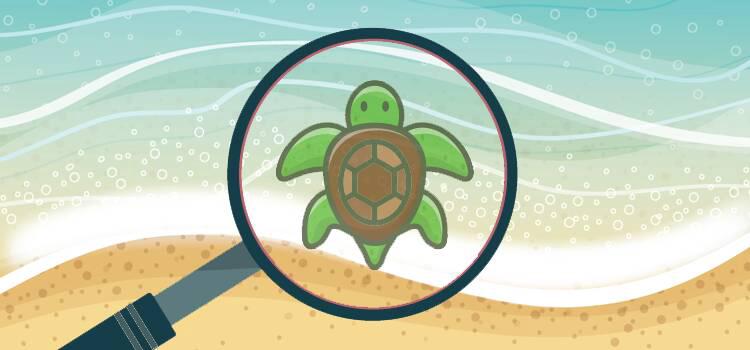
Spot The Turtle Quiz
🧐 Did you know?
Can you spot the turtle?
Turtles are one of the most recognizable animals in the whole animal kingdom! Not only because their shells are a part of their body, but also because they come from the oldest family of reptiles! While turtles are one of the oldest animals in the kingdom, they are still commonly confused with other reptiles, specifically tortoises.
To help spread the word of everything great about turtles, we've created a quiz with fun facts about these beautiful creatures on every question! What kind of foods does a wild turtle eat? How much time do they spend on the land compared to the sea? How many different kinds of turtles are there? Can you spot all the turtles?
📚 History Lesson
Turtles are one of the oldest reptile groups on Earth, with their ancestors dating back over 200 million years ago, during the time of the dinosaurs. The earliest known turtle fossils are from the Triassic Period, which was about 220 million years ago.
One of the most remarkable things about turtles is their unique shell, which evolved as a way to protect them from predators. The shell is made up of two parts: the top part is called the carapace, and the bottom part is called the plastron. Turtles can actually feel through their shells, kind of like how we can feel through our fingernails!
Throughout history, turtles have played important roles in many cultures. In ancient China, people believed that the world was created on the back of a giant turtle. In Native American folklore, turtles are often seen as symbols of wisdom, patience, and longevity.
During the Age of Exploration in the 1500s and 1600s, sailors used to catch and eat turtles on their long voyages. In fact, the green sea turtle was named after the green fat found under its shell, which was considered a delicacy.
In more recent times, turtles have faced many challenges. Habitat loss, pollution, and hunting have put many turtle species at risk of extinction. However, people around the world are working hard to protect turtles and their habitats.
One famous example is the Galapagos giant tortoise, which was hunted to near-extinction in the 1800s. Thanks to conservation efforts, their populations are now recovering, and they've become a symbol of the importance of wildlife protection.
Today, there are over 300 species of turtles found on every continent except Antarctica. They come in all shapes and sizes, from the tiny bog turtle (which can fit in the palm of your hand) to the massive leatherback sea turtle (which can weigh over 1,500 pounds!).
Turtles continue to capture our imaginations and inspire us with their resilience and adaptability. They remind us of the incredible diversity of life on Earth and the importance of protecting our natural world for future generations.
So the next time you see a turtle, whether it's in a pond, on the beach, or even in a storybook, remember the amazing history and cultural significance of these ancient and fascinating creatures!
🤔 Interesting Fact
Did you know that some turtles can breathe through their butts? Yes, you read that right – their butts!
This unusual ability is called cloacal respiration, and it's found in some species of aquatic turtles, like the Australian Fitzroy river turtle and the North American eastern painted turtle.
Here's how it works: these turtles have a special chamber called the cloaca, which is kind of like a multipurpose opening used for reproduction and waste removal. The cloaca is lined with special blood vessels that can absorb oxygen directly from the water.
When the turtle is underwater, it can pump water in and out of its cloaca, allowing it to get oxygen without having to come up for air. This adaptation helps the turtles stay submerged for longer periods of time, which is useful for hiding from predators or hunting for food.
Scientists think that cloacal respiration evolved as a way for turtles to cope with living in water that doesn't have a lot of oxygen, like in swamps or stagnant ponds. By being able to breathe through their butts, these turtles can survive in habitats that other animals might find too challenging.
Of course, turtles still have lungs and can breathe air normally when they're on land or swimming near the surface. But having an extra way to get oxygen is a pretty cool adaptation that shows how turtles have evolved to thrive in different environments.
So the next time someone tells you to "hold your breath," just remember that some turtles don't even need to use their mouths to breathe!



